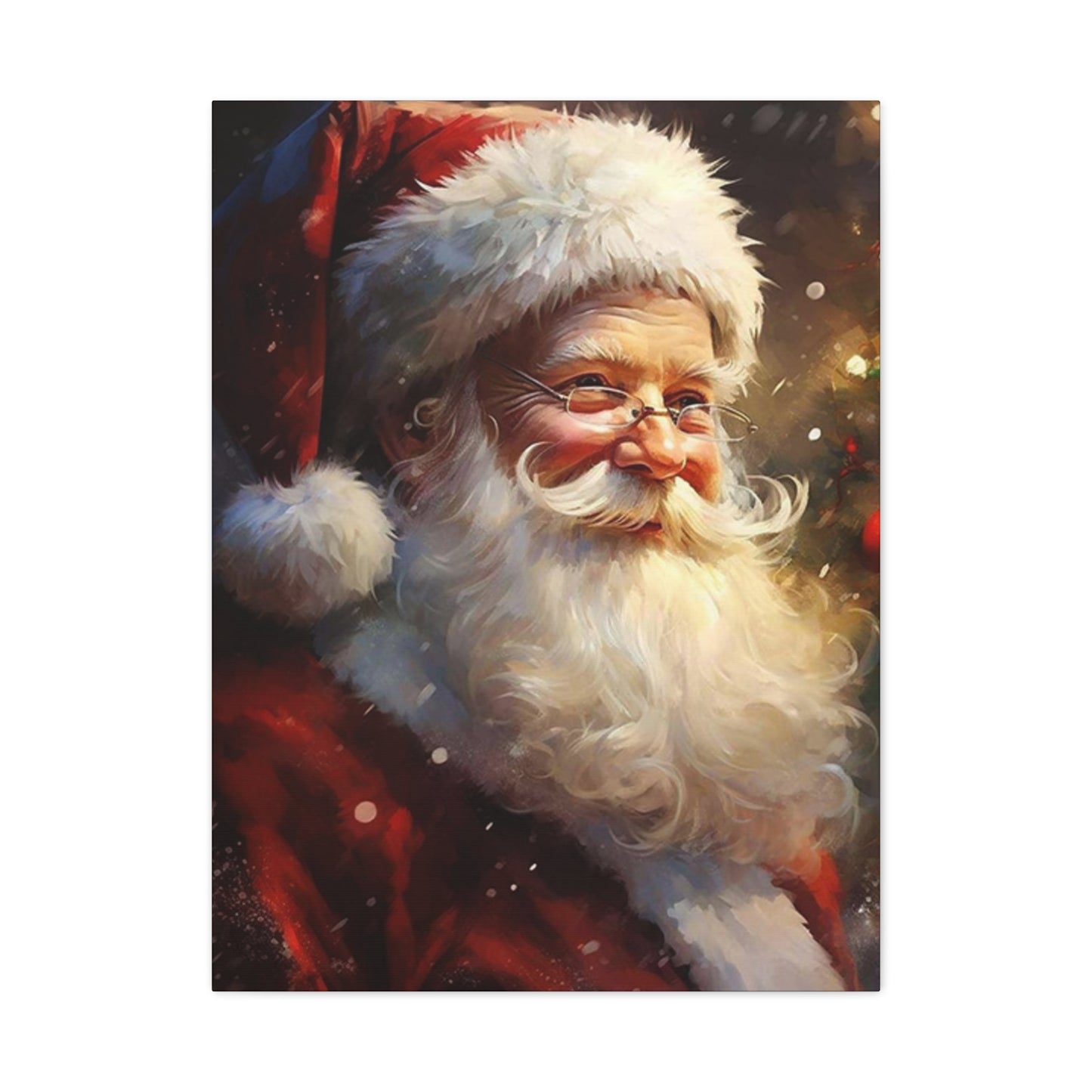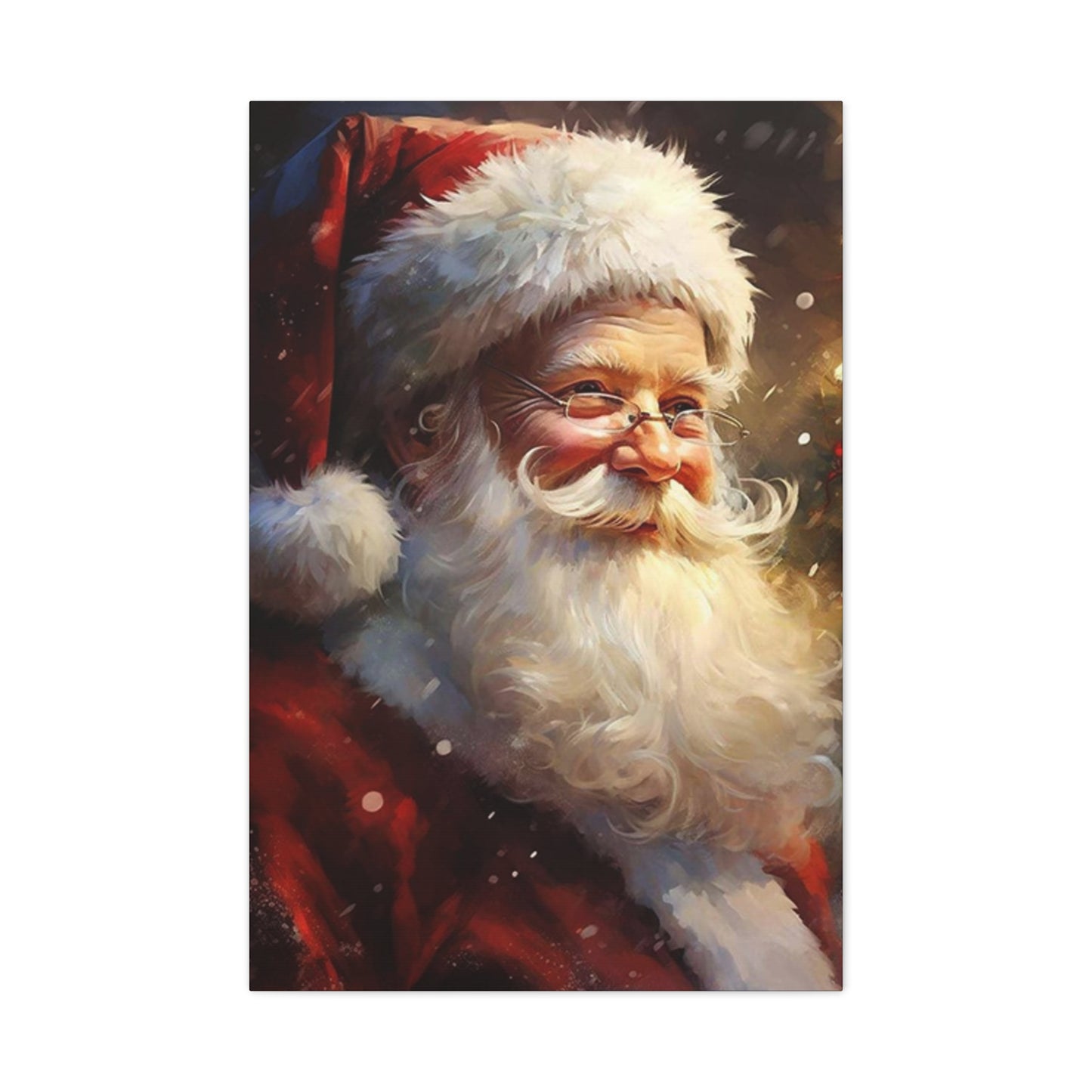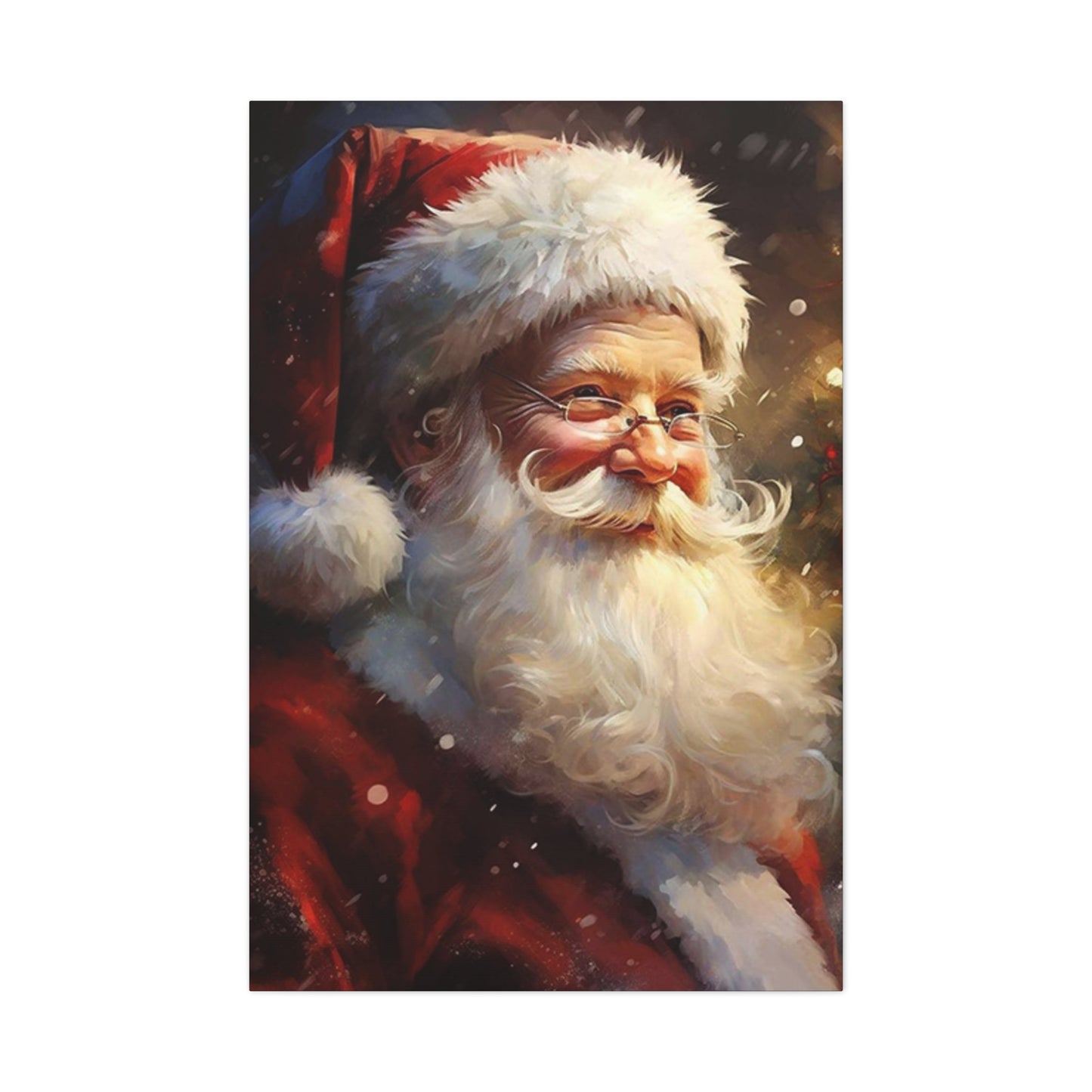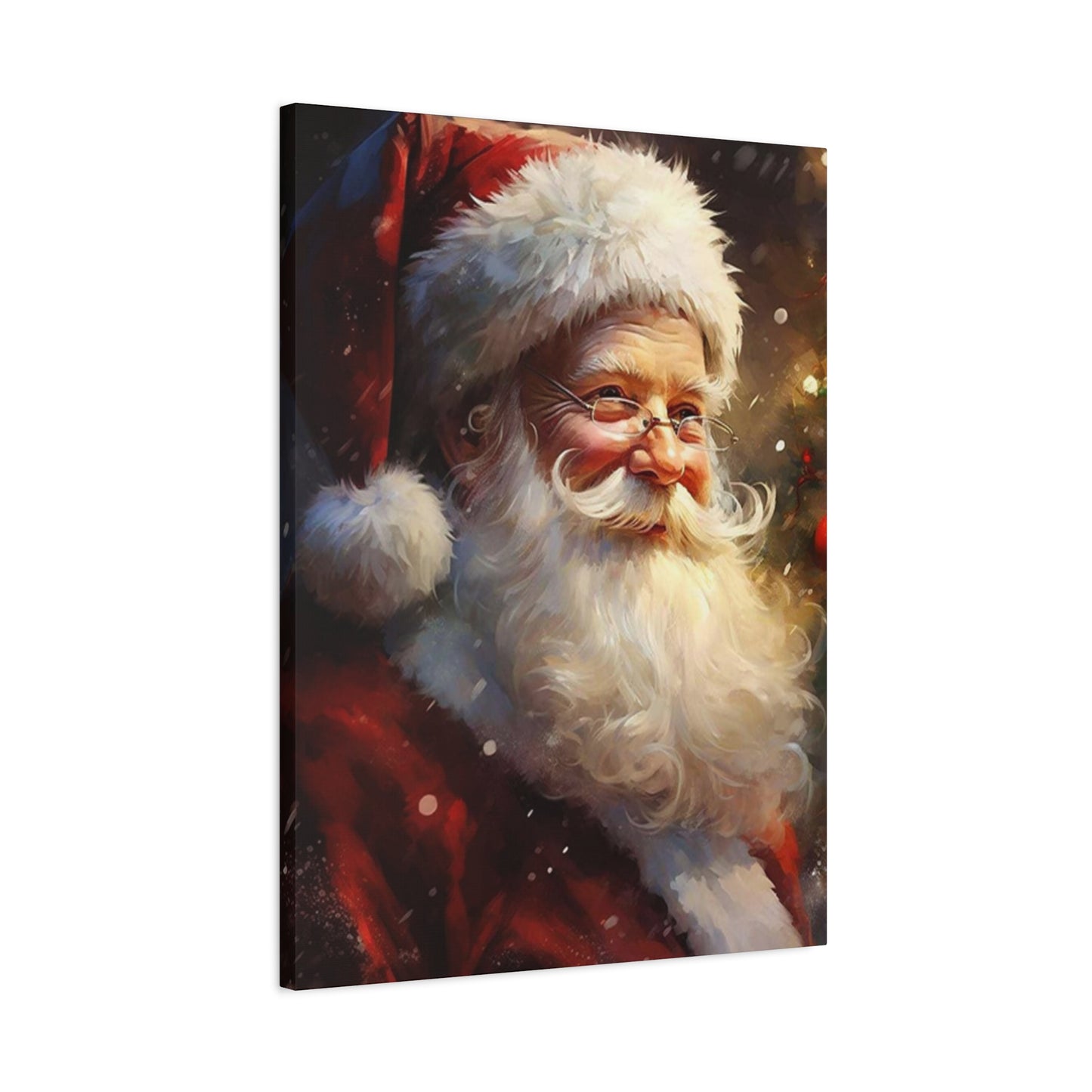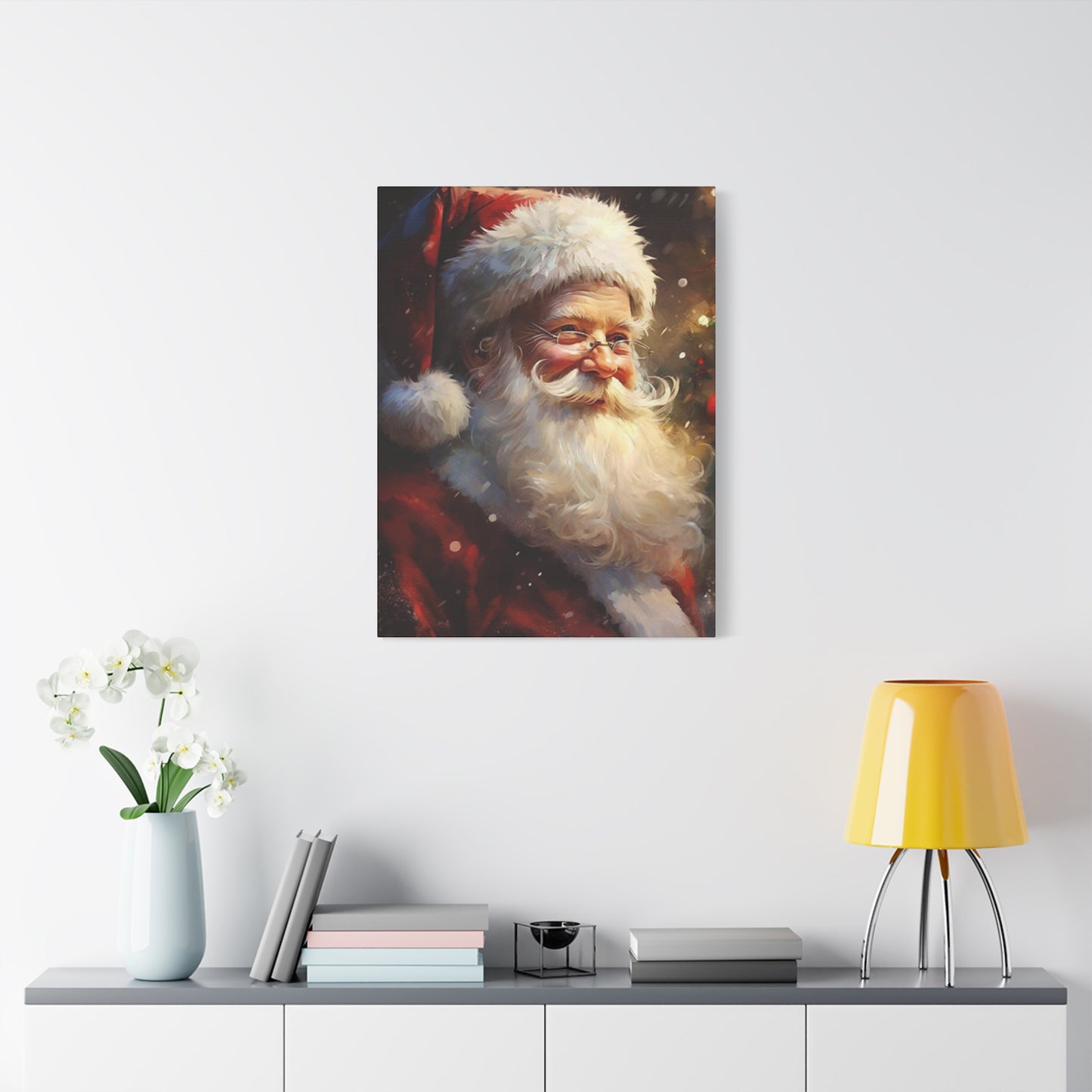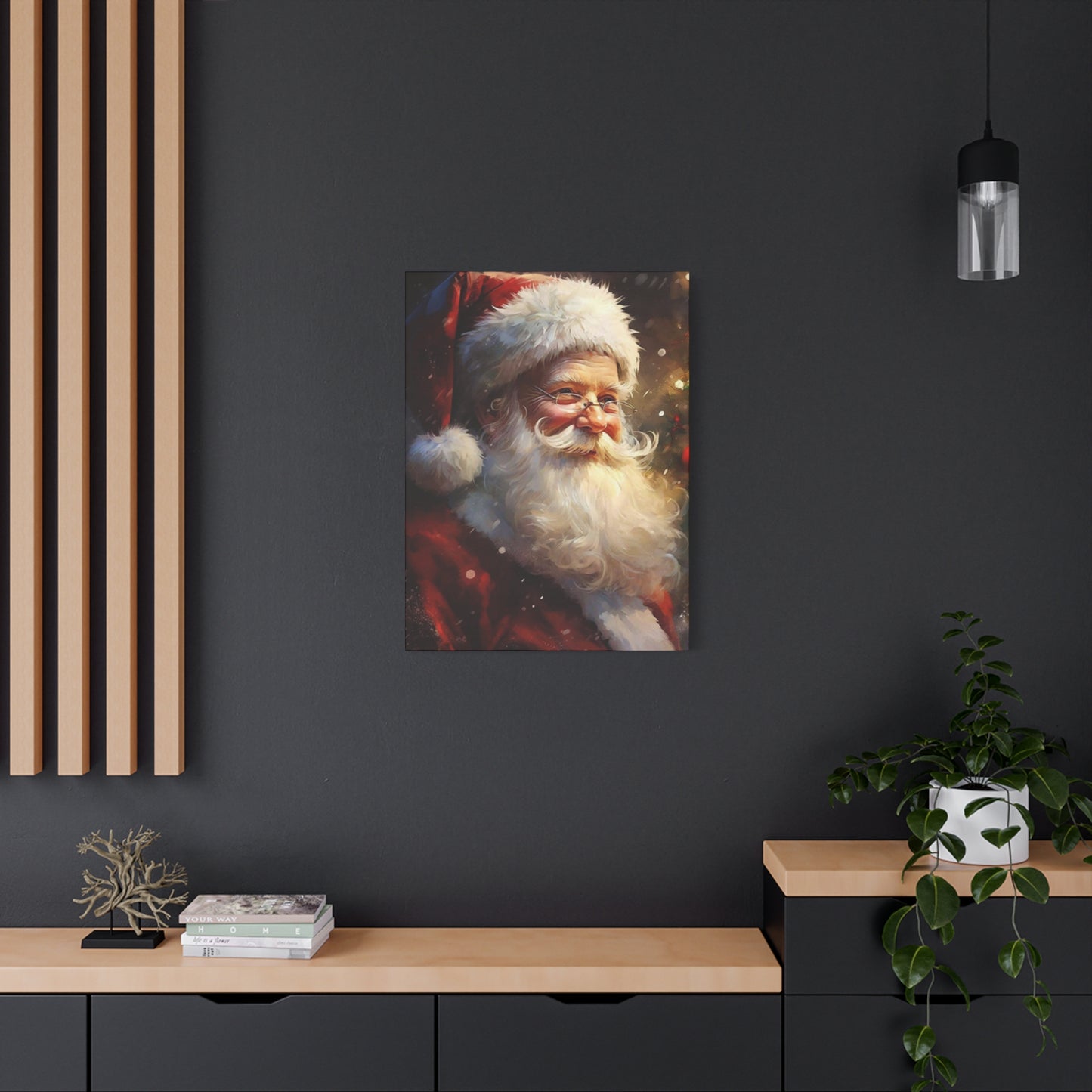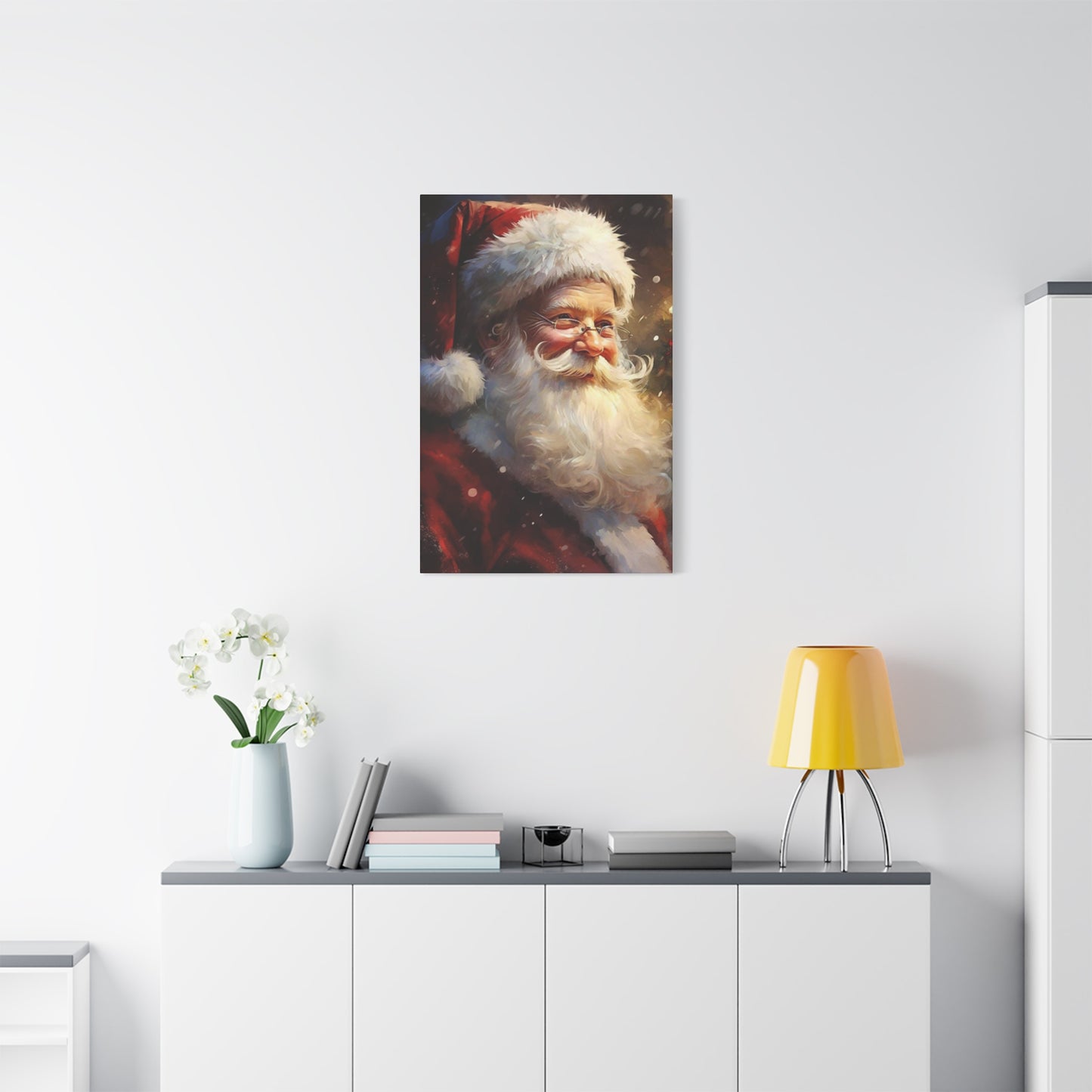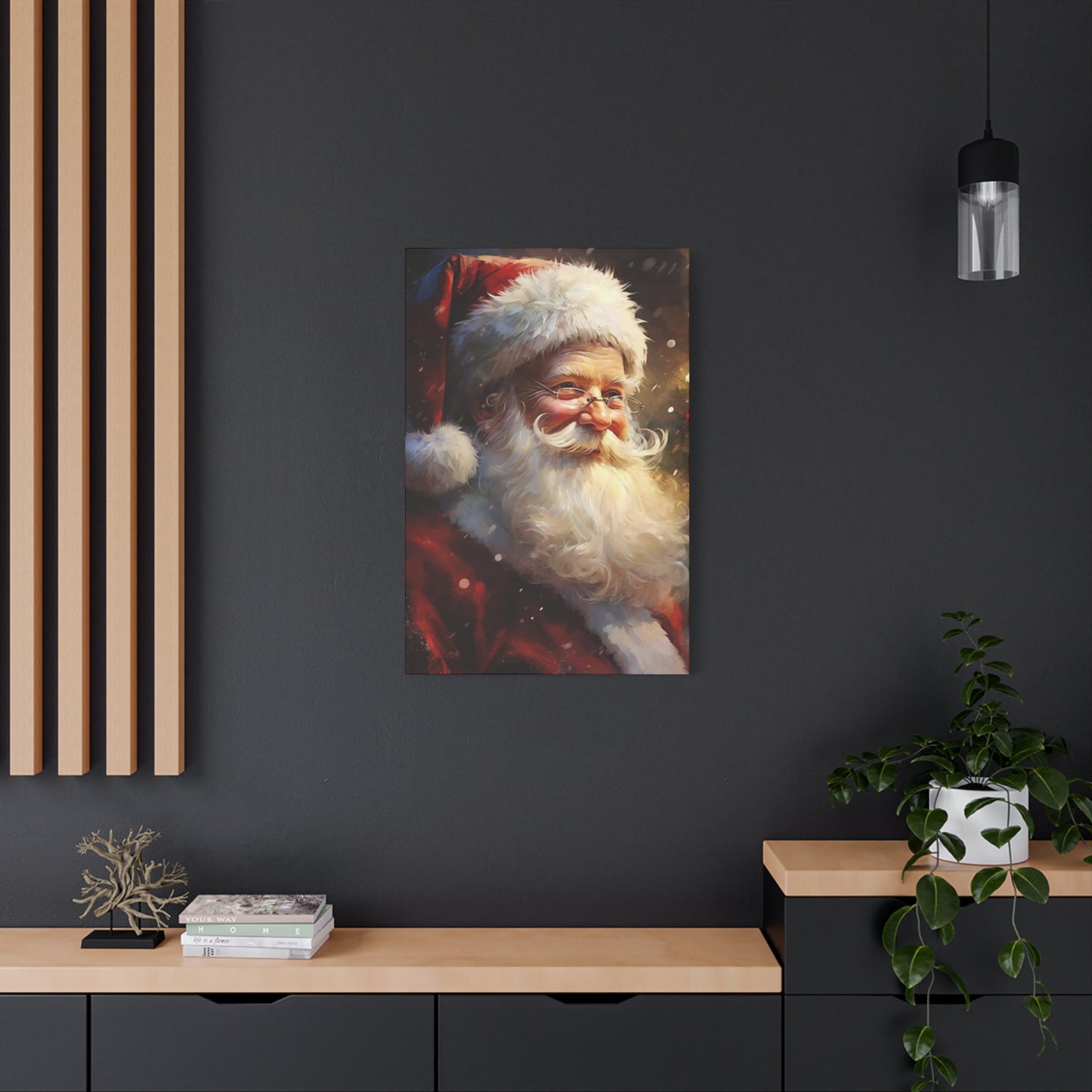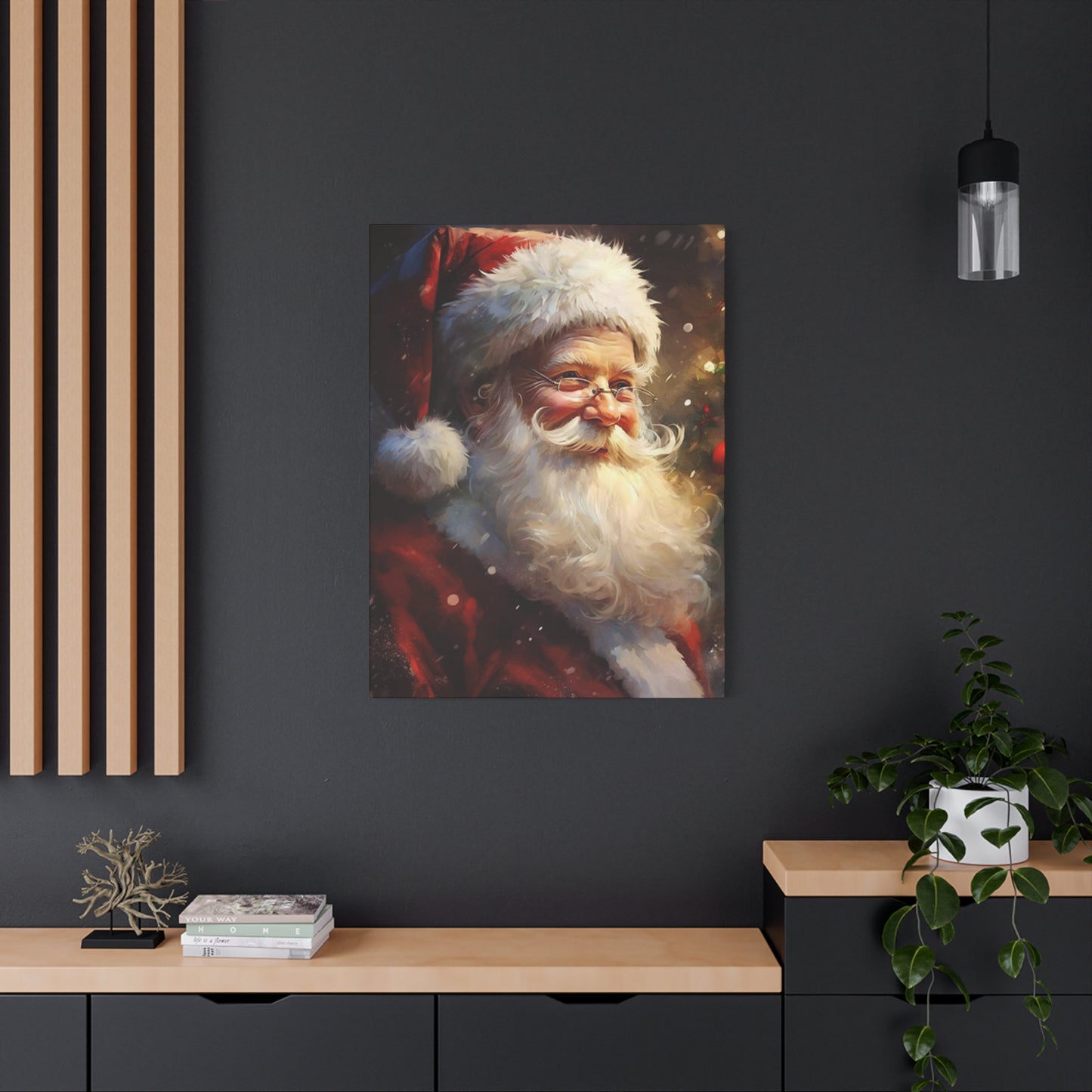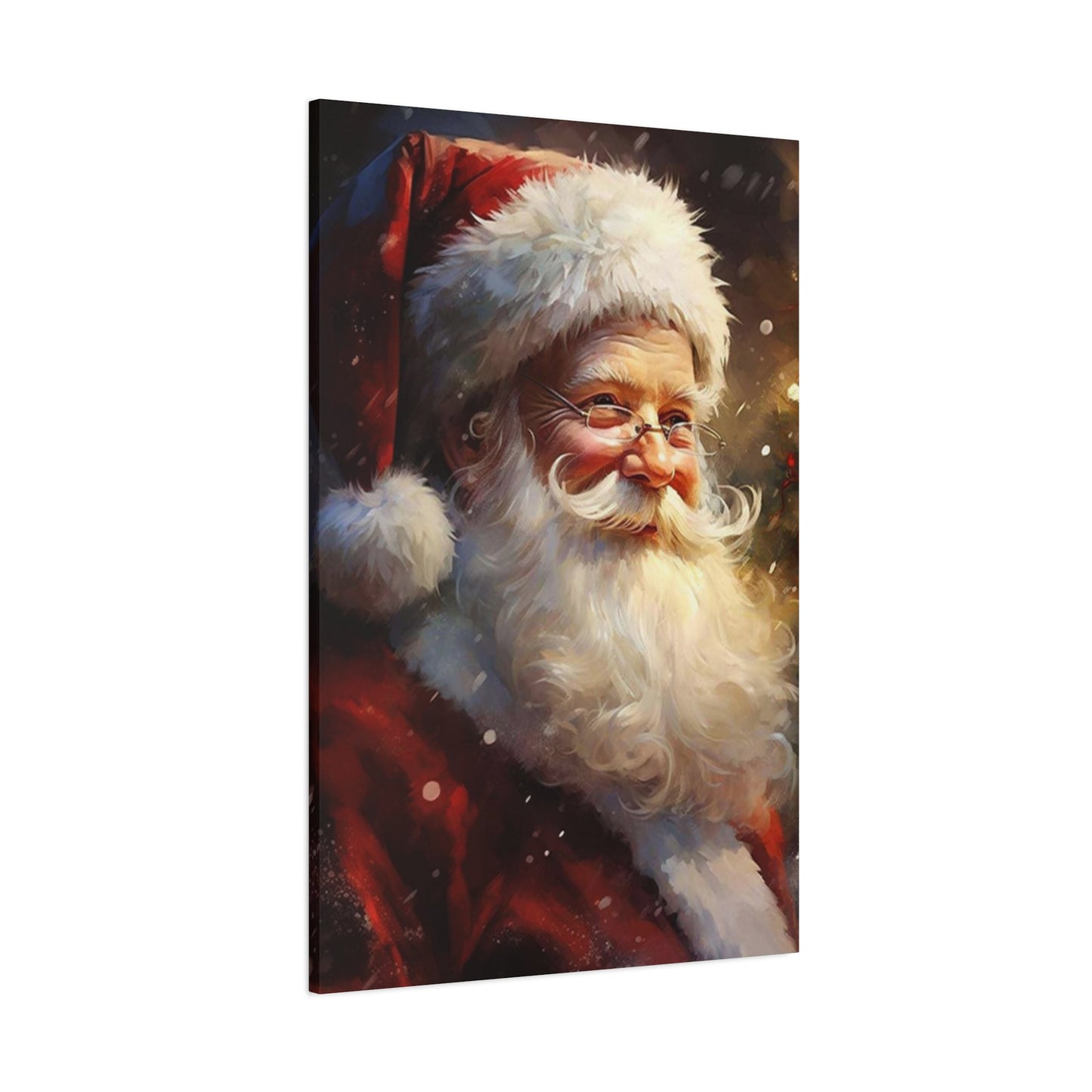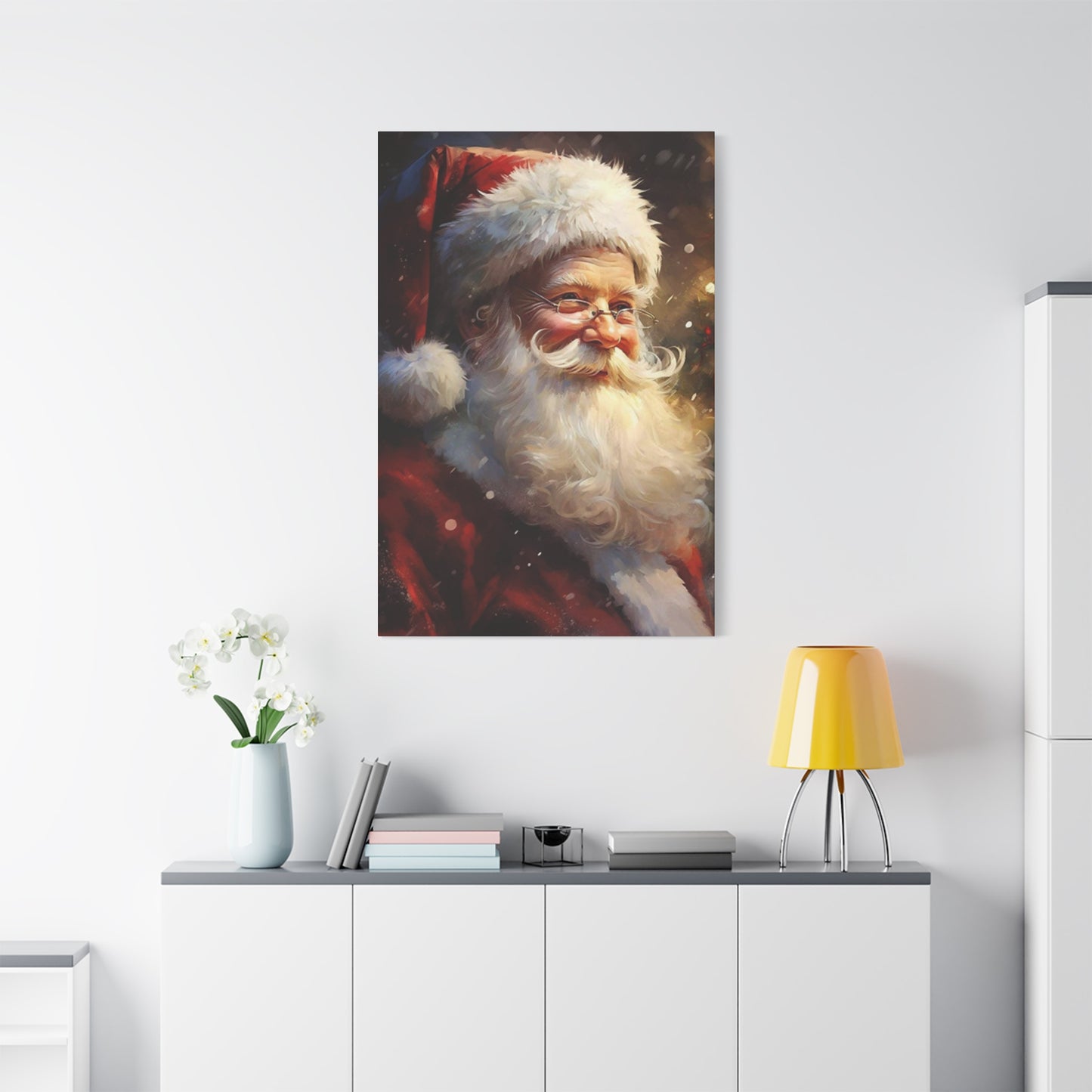Festive Santa Claus Wall Art: Creating Magical Holiday Atmospheres with Joyful Seasonal Paintings
The holiday season brings an unparalleled sense of warmth, joy, and togetherness that transforms ordinary homes into magical wonderlands. Among the most beloved symbols of this festive period, Santa Claus stands as an iconic figure that instantly evokes feelings of childhood wonder, generosity, and seasonal cheer. Incorporating Santa Claus wall art into your holiday decorating scheme offers an exceptional way to capture and celebrate these cherished emotions while creating lasting memories for family and friends.
Santa Claus artwork has evolved tremendously over the decades, moving far beyond simple traditional depictions to encompass a vast array of artistic styles, color palettes, and creative interpretations. From whimsical cartoon-style renditions that delight children to sophisticated artistic interpretations that appeal to adult sensibilities, the world of Santa-themed wall art offers something special for every taste, preference, and decorating vision.
The psychological impact of seasonal artwork cannot be overstated, particularly when it comes to creating an atmosphere of celebration and joy. Santa Claus imagery carries with it centuries of cultural significance, representing not just the Christmas holiday but fundamental human values of kindness, generosity, and the magic of believing in something wonderful. When strategically placed throughout the home, these artistic pieces serve as daily reminders of these positive qualities while contributing to an overall sense of seasonal festivity.
Contemporary homes demand versatility in their decorative elements, and Santa Claus wall art delivers this flexibility in abundance. Whether your personal aesthetic leans toward traditional, modern, rustic, or eclectic styling, there exists a wealth of Santa-themed artwork that can seamlessly integrate into your existing decorative scheme. The key lies in understanding how different artistic approaches, color combinations, and presentation methods can enhance rather than overwhelm your current decor.
The market for holiday-themed artwork has expanded dramatically in recent years, driven by both increasing consumer interest in personalized home decoration and the growing availability of high-quality reproductions and original pieces. This expansion has created unprecedented opportunities for homeowners to find exactly the right pieces to reflect their personal vision of holiday celebration while staying within reasonable budget parameters.
Professional decorators and art consultants consistently recommend incorporating seasonal elements as a way to keep homes feeling fresh, current, and emotionally engaging throughout the year. Santa Claus wall art represents one of the most effective ways to achieve this goal during the holiday season, offering both visual impact and emotional resonance that few other decorative elements can match.
Cheerful Santa Claus Wall Art Ideas
The realm of cheerful Santa Claus wall art encompasses an extraordinary range of creative possibilities, each designed to capture different aspects of the beloved holiday figure's enduring appeal. Traditional jolly Santa depictions remain perennially popular, featuring the classic red-suited figure with his characteristic white beard, twinkling eyes, and warm smile. These timeless representations often incorporate elements like snow-covered landscapes, reindeer, sleighs, and gift-filled sacks that immediately transport viewers into the magical world of Christmas folklore.
Contemporary artists have reimagined Santa in countless innovative ways, creating pieces that maintain the essential spirit of the character while offering fresh perspectives that appeal to modern sensibilities. Some artists focus on capturing Santa in candid moments of preparation, showing him carefully wrapping presents, reading letters from children, or sharing quiet moments with Mrs. Claus. These intimate portrayals add depth and humanity to the legendary figure, making him feel more accessible and relatable to viewers of all ages.
Color-focused Santa artwork has gained tremendous popularity among homeowners seeking to coordinate their holiday decor with existing color schemes. While traditional red and white combinations remain classic choices, many contemporary pieces experiment with alternative palettes, incorporating rich burgundies, forest greens, golden yellows, and even unexpected colors like blues, purples, and metallics. These variations allow for greater flexibility in matching Santa artwork with diverse decorating themes and personal preferences.
Whimsical and playful Santa depictions offer another avenue for creating cheerful holiday atmospheres, particularly in homes with children or in areas designated for family gathering and entertainment. These pieces might show Santa engaged in amusing activities like surfing, riding motorcycles, playing musical instruments, or interacting with contemporary technology. Such imaginative interpretations maintain the essential joy and magic associated with Santa while adding elements of surprise and humor that can spark conversations and create lasting memories.
Mixed-media Santa artwork represents an exciting frontier in holiday decorating, combining traditional painting techniques with elements like fabric, wood, metal, or three-dimensional components. These pieces often create rich textural experiences that add visual interest and tactile appeal to walls. Some incorporate actual fabric for Santa's suit, real bells for his belt, or miniature accessories that seem to bring the artwork to life.
Seasonal landscape pieces featuring Santa as part of larger winter scenes offer opportunities to create dramatic focal points while celebrating the broader context of the holiday season. These might include Santa's workshop nestled in snowy mountains, his sleigh soaring over moonlit cityscapes, or peaceful moments at the North Pole surrounded by winter wildlife. Such comprehensive scenes can serve as conversation starters while providing rich visual detail that rewards closer examination.
The scale and proportion of Santa artwork play crucial roles in achieving the desired emotional impact. Large-scale pieces can dominate walls and create commanding focal points, while smaller works might be grouped together to create gallery-style arrangements. The key is selecting sizes that complement the proportions of the rooms where they will be displayed while ensuring that the chosen pieces contribute to rather than compete with other decorative elements.
How to Choose Happy Santa Paintings
Selecting the perfect Santa paintings requires careful consideration of multiple factors that will influence both the immediate visual impact and the long-term satisfaction you derive from your chosen pieces. The first consideration should always be the overall aesthetic direction of your home and the specific rooms where you plan to display the artwork. Traditional homes might benefit most from classic, realistic Santa depictions that echo historical artistic traditions, while contemporary environments might be better served by more abstract, stylized, or unconventional interpretations of the beloved holiday figure.
The size and scale of available wall areas represent critical practical considerations that will significantly impact your selection process. Large, expansive walls can accommodate substantial pieces or groupings of multiple works, while smaller areas might require more compact single pieces or carefully arranged collections of miniature works. Measuring wall dimensions accurately before shopping ensures that your chosen pieces will fit properly and create the desired visual balance within their intended locations.
Color coordination between Santa paintings and existing decor requires thoughtful planning to achieve harmonious results. While Santa's traditional red and white color scheme works beautifully in many settings, consider how these colors will interact with your furniture, other artwork, wall colors, and decorative accessories. Some rooms might benefit from Santa paintings that incorporate complementary or analogous colors, while others might welcome the bold contrast that traditional Santa colors can provide.
The artistic style and technique used in Santa paintings should reflect your personal preferences while complementing the overall design sensibility of your home. Realistic oil paintings might appeal to those who appreciate traditional artistic approaches, while watercolor pieces could suit those preferring softer, more impressionistic effects. Digital artwork and contemporary mixed-media pieces offer modern alternatives that might better match contemporary or eclectic decorating schemes.
Subject matter and composition within Santa paintings deserve careful attention, as these elements will significantly influence the emotional response and daily enjoyment you experience from your chosen pieces. Some people prefer action-packed scenes showing Santa in flight or actively delivering presents, while others might favor quieter, more contemplative moments that emphasize the peaceful, spiritual aspects of the holiday season. Consider whether you want pieces that tell complete stories or simpler compositions that focus primarily on Santa's character and personality.
Quality considerations encompass both the technical execution of the artwork and the materials and methods used in its creation and reproduction. Original paintings represent the highest quality option but typically command premium prices. High-quality giclée prints can provide excellent alternatives that capture fine artistic details while remaining more affordable. Pay attention to the reputation of artists and publishers, the quality of printing materials, and the longevity of inks and papers used in reproduction processes.
The intended audience for your Santa paintings should influence your selection process. Pieces intended primarily for adult appreciation might incorporate sophisticated artistic techniques, subtle color palettes, or complex compositional elements. Artwork intended to delight children might emphasize bright colors, clear details, and easily recognizable elements that will capture and maintain young attention spans.
Budget considerations need not limit your options if you approach the selection process strategically. While original works by established artists command high prices, many beautiful and well-executed pieces are available at more modest price points. Consider mixing investment-quality pieces with more affordable options, focusing your budget on pieces that will occupy the most prominent positions or receive the most viewing time.
Brightening Holidays with Santa Wall Art
The transformative power of Santa wall art extends far beyond mere decoration, serving as a catalyst for creating the warm, welcoming atmosphere that defines truly memorable holiday celebrations. When strategically incorporated into home environments, Santa-themed artwork functions as visual anchors that immediately communicate seasonal joy and festive spirit to family members and guests alike. This psychological impact cannot be understated, as the presence of beloved holiday imagery helps establish and maintain the emotional tone that makes holiday gatherings feel special and significant.
Lighting plays a crucial role in maximizing the impact of Santa wall art throughout the holiday season. Proper illumination can dramatically enhance colors, highlight artistic details, and create the warm, cozy atmosphere that epitomizes holiday comfort. Consider installing adjustable lighting systems that allow you to modify illumination levels based on different occasions and times of day. Soft, warm lighting tends to enhance the nostalgic, comforting qualities associated with Santa imagery, while brighter illumination might be preferred when hosting larger gatherings or when detailed examination of artistic elements is desired.
The placement timing of Santa wall art can significantly influence its effectiveness in brightening holiday celebrations. Many families find that installing their Santa artwork immediately after Thanksgiving creates a gradual transition into the holiday season, building anticipation and excitement over the coming weeks. Others prefer to coordinate the installation with other decorating activities, creating comprehensive holiday transformations that occur over specific weekends or time periods.
Creating cohesive visual narratives through the strategic arrangement of multiple Santa pieces can amplify their individual impacts while telling engaging stories about the holiday season. Consider arranging pieces to suggest the progression of Christmas Eve activities, from Santa's preparation at the North Pole through his global journey and ultimate arrival at individual homes. Such storytelling approaches can be particularly effective in areas where family members gather regularly, such as living rooms, family rooms, or hallways.
The psychological benefits of surrounding yourself with positive, uplifting imagery during the often-stressful holiday season should not be overlooked. Santa Claus represents optimism, generosity, and the fulfillment of hopes and dreams – qualities that can provide emotional support and encouragement during challenging times. The simple act of viewing cheerful Santa artwork can trigger positive emotional responses and help maintain the joyful perspective that makes holiday celebrations meaningful and memorable.
Seasonal tradition building represents another important benefit of incorporating Santa wall art into holiday decorating routines. Families often develop cherished rituals around the installation and arrangement of their holiday artwork, creating shared experiences that strengthen family bonds and establish lasting memories. Children particularly enjoy participating in these traditions, learning to associate the appearance of Santa artwork with the excitement and magic of the approaching holiday season.
The social aspects of Santa wall art should not be underestimated, as these pieces often serve as conversation starters and focal points during holiday entertaining. Guests frequently gravitate toward interesting or unusual Santa artwork, leading to discussions about artistic techniques, holiday memories, and personal traditions. This social lubrication can be particularly valuable during gatherings that include individuals who might not know each other well, providing common ground for building connections and sharing experiences.
Photographic opportunities multiply when homes are decorated with attractive Santa wall art, as these pieces often serve as charming backdrops for family portraits and holiday photography. Many families develop traditions around taking annual photos in front of favorite Santa pieces, creating visual records of family growth and change over the years. The presence of consistent artistic elements in these photographs helps create visual continuity in family albums and digital collections.
Classic Happy Santa Claus Paintings
Classic Santa Claus paintings represent a treasured artistic tradition that has evolved over more than a century, reflecting changing cultural attitudes while maintaining the essential characteristics that make Santa such an enduring and beloved figure. These traditional depictions typically feature Santa in his iconic red suit trimmed with white fur, complete with the characteristic black belt, sturdy boots, and warm winter hat. The artistic techniques used in classic Santa paintings often emphasize rich, saturated colors, careful attention to detail, and realistic rendering that brings the legendary figure to life with remarkable authenticity and emotional warmth.
The historical development of classic Santa imagery can be traced through the work of influential illustrators and artists who helped establish the visual conventions that continue to define Santa's appearance today. Early Santa depictions often reflected European folk traditions and religious iconography, featuring Saint Nicholas in traditional bishop's robes or other historically accurate clothing. The transformation to the more familiar red-suited figure occurred gradually through the work of artists like Thomas Nast, who created influential Santa illustrations for Harper's Weekly during the late 1800s, and later through the work of commercial artists like Haddon Sundblom, whose Coca-Cola Santa advertisements became iconic representations that influenced Santa imagery worldwide.
Traditional artistic techniques employed in classic Santa paintings typically emphasize careful observation and realistic representation, with artists paying particular attention to facial expressions, body language, and environmental details that enhance the believability and emotional impact of their subjects. Oil painting techniques remain popular for classic Santa artwork due to their ability to capture rich color gradations, subtle lighting effects, and fine textural details that bring Santa's character to life. The careful modeling of Santa's facial features, particularly his eyes and smile, represents a crucial element in creating pieces that successfully convey warmth, kindness, and genuine joy.
Color palettes in classic Santa paintings tend to emphasize traditional holiday colors, with various shades of red serving as the dominant elements balanced by crisp whites, rich blacks, and warm flesh tones. Many classic pieces also incorporate complementary colors like deep greens from evergreen trees, golden yellows from firelight or candlelight, and rich browns from wooden elements like sleighs, furniture, or architectural details. These color combinations create visual harmony while reinforcing the cozy, comfortable atmosphere associated with traditional holiday celebrations.
Compositional approaches in classic Santa paintings often focus on creating intimate, personal connections between the subject and viewers. Many pieces feature Santa engaged in relatable activities like reading children's letters, checking his list, or carefully wrapping presents. These compositions humanize the legendary figure while emphasizing his role as a caring, attentive gift-giver who takes his responsibilities seriously. Other classic compositions might show Santa in more majestic contexts, such as commanding his reindeer team or surveying the winter landscape from his sleigh, emphasizing his magical abilities and global reach.
The emotional resonance of classic Santa paintings stems largely from their ability to tap into shared cultural memories and associations that transcend generational boundaries. Adults viewing classic Santa artwork often experience nostalgic connections to their own childhood experiences and memories, while children encountering these images for the first time can readily identify with the warmth and security that classic Santa represents. This intergenerational appeal makes classic Santa paintings excellent choices for family areas where people of all ages gather and interact.
Contemporary artists working in classic styles continue to produce new Santa paintings that honor traditional artistic approaches while incorporating subtle modern sensibilities. These pieces might feature slightly updated clothing details, more diverse supporting characters, or contemporary background elements while maintaining the essential visual and emotional qualities that define classic Santa imagery. Such works offer the best of both worlds, providing the comfort and familiarity of traditional approaches combined with fresh perspectives that feel current and relevant.
Investment potential represents an additional consideration for collectors interested in classic Santa paintings, particularly original works by established artists or historically significant pieces that document the evolution of Santa imagery over time. Well-executed classic Santa paintings often maintain or increase their value over time, making them not only sources of seasonal joy but also potentially sound financial investments that can be passed down through families as cherished heirlooms.
Modern Santa Claus Wall Art Styles
Contemporary artists have revolutionized Santa Claus imagery by introducing innovative artistic approaches that maintain the essential spirit and recognition value of the beloved holiday figure while incorporating modern aesthetic sensibilities, techniques, and cultural references. Modern Santa Claus wall art encompasses an extraordinary range of artistic styles, from minimalist interpretations that distill Santa's essence into simple, powerful visual elements to complex mixed-media pieces that incorporate diverse materials and techniques to create rich, textured experiences that challenge traditional expectations while celebrating the enduring appeal of holiday traditions.
Abstract and impressionistic Santa artwork represents one of the most exciting developments in contemporary holiday art, with artists using color, form, and composition to suggest Santa's presence and personality without relying on literal representation. These pieces might use bold red and white color fields to evoke Santa's traditional costume, or incorporate gestural brushstrokes that suggest movement and energy associated with his legendary Christmas Eve journey. Such abstract approaches allow viewers to engage their imagination and personal associations while experiencing the emotional impact of Santa imagery in new and unexpected ways.
Geometric and minimalist Santa interpretations appeal to homeowners with contemporary aesthetic preferences who want to incorporate holiday elements without compromising their modern design sensibilities. These pieces might reduce Santa to essential geometric shapes, use clean lines and simplified color palettes, or employ negative space techniques that suggest Santa's form through careful arrangement of positive and negative elements. The resulting artwork can be both sophisticated and playful, offering subtle holiday references that complement rather than compete with contemporary furnishings and architectural elements.
Pop art and street art influences have produced vibrant, energetic Santa pieces that reflect contemporary urban culture while maintaining connections to traditional holiday imagery. These works might incorporate bold graphic elements, high-contrast color combinations, or techniques borrowed from advertising and commercial art. Some pieces might show Santa in contemporary urban settings, interacting with modern technology, or rendered in styles reminiscent of comic books, graffiti art, or digital media. Such approaches can be particularly effective in homes with eclectic or contemporary decorating themes.
Digital art and computer-generated Santa imagery represents an entirely new frontier in holiday artwork, with artists using advanced software and digital techniques to create pieces that would be impossible to achieve through traditional methods. These works might incorporate photorealistic rendering, fantastical lighting effects, or surreal environmental elements that create dreamlike interpretations of Santa and his world. Digital techniques also allow for easy customization and personalization, enabling artists to create unique pieces tailored to specific preferences and requirements.
Mixed-media Santa artwork combines traditional painting or drawing techniques with three-dimensional elements, fabric, metal, wood, or other materials to create rich, textured pieces that engage multiple senses. These works might incorporate actual fabric for Santa's costume, real bells or other accessories, or textured background elements that add visual and tactile interest. Mixed-media approaches can create striking focal points that draw attention and encourage closer examination, making them excellent choices for prominent display areas.
Cultural fusion approaches to modern Santa art reflect our increasingly global society by incorporating artistic traditions and aesthetic elements from diverse cultures while maintaining Santa's essential characteristics. These pieces might combine Santa imagery with artistic techniques borrowed from Asian brush painting, African textile patterns, Latin American color palettes, or other cultural traditions. Such works can create unique, personalized expressions of holiday celebration that reflect the diverse backgrounds and experiences of contemporary families.
Photographic Santa art represents another modern approach, with photographers creating artistic images of Santa figures, holiday scenes, or abstract compositions that capture the essence of holiday celebration through the lens rather than the brush. These works might employ special lighting techniques, unusual angles, or post-processing effects to create images that feel both familiar and fresh. Photographic approaches can be particularly effective for creating large-scale pieces that make dramatic statements in contemporary settings.
Interactive and technology-enhanced Santa art pushes the boundaries of traditional wall art by incorporating elements like LED lighting, motion sensors, or even digital displays that change or respond to viewer presence. While these pieces might not be appropriate for all settings, they can create memorable, engaging experiences that particularly appeal to tech-savvy families or those looking to create unique, cutting-edge holiday displays.
Framing Happy Santa Paintings
The selection and application of appropriate framing techniques can dramatically enhance the visual impact and longevity of Santa paintings while ensuring their successful integration into diverse home environments. Professional framing not only protects valuable artwork from environmental damage but also serves as a crucial design element that can either complement or contrast with both the artwork itself and the surrounding decor. The framing process requires careful consideration of multiple factors, including artistic style, color coordination, room aesthetics, and budget constraints, all of which must be balanced to achieve optimal results.
Frame material selection represents one of the most important decisions in the framing process, with options ranging from traditional wood frames to contemporary metal alternatives and innovative synthetic materials. Wood frames remain popular choices for Santa paintings due to their warmth, versatility, and ability to complement holiday decorating themes. Different wood species offer distinct aesthetic qualities, with rich mahogany or cherry frames providing elegant, sophisticated appearances, while lighter oak or pine frames might better suit casual or rustic decorating schemes. The wood finish, whether natural, stained, or painted, significantly influences the overall appearance and should be selected to harmonize with existing furniture and architectural elements.
Metal frames offer sleek, contemporary alternatives that work particularly well with modern or minimalist Santa artwork. Silver, gold, bronze, and black metal frames each create different visual effects and emotional responses. Silver and chrome frames tend to feel cool and contemporary, while gold and bronze options provide warmer, more traditional appearances. Black metal frames offer neutral alternatives that allow artwork to take center stage without competing for visual attention. The profile and width of metal frames also influence their visual impact, with thin profiles creating subtle borders while wider frames make stronger decorative statements.
Matting decisions significantly affect both the appearance and preservation of Santa paintings, providing visual breathing room around the artwork while creating protective barriers between the image and the glass. Mat colors should be selected to complement both the artwork and the frame, with neutral tones like cream, white, or soft gray offering versatile options that work with most Santa paintings. Colored mats can create striking effects when carefully coordinated with specific elements within the artwork, but require more careful consideration to avoid overwhelming the image or creating color conflicts with room decor.
Glass selection involves choosing between regular glass, non-reflective glass, acrylic alternatives, and specialty conservation glazing that provides enhanced protection against ultraviolet light damage. Non-reflective options reduce glare and improve visibility in brightly lit areas but may slightly diminish color intensity. Conservation glass offers superior protection for valuable pieces but typically costs more than standard alternatives. The choice depends on the artwork's value, the display environment, and budget considerations.
Custom versus standard framing represents another important decision that affects both cost and aesthetic outcomes. Custom framing allows for precise control over all elements and ensures perfect fit and appearance but typically costs significantly more than standard options. Many Santa paintings can be successfully framed using standard sizes available at frame shops and home improvement stores, particularly if minor adjustments to mat sizes can accommodate slight dimension differences. The key is determining whether custom work is justified by the artwork's value and the importance of achieving perfect aesthetic integration.
Professional framing services provide expertise and equipment that can ensure optimal results, particularly for valuable or delicate pieces. Professional framers understand conservation techniques, can recommend appropriate materials and methods, and possess the tools and skills necessary to achieve museum-quality results. However, many Santa paintings can be successfully framed using do-it-yourself approaches, particularly if standard sizes and straightforward framing techniques are appropriate.
Seasonal framing considerations might influence decisions about frame selection and installation methods. Some families prefer to use lightweight, easily changed frames that facilitate rotating seasonal artwork displays throughout the year. Others invest in high-quality permanent installations that remain in place year-round. The choice depends on storage capabilities, display preferences, and the role that Santa artwork plays in overall decorating schemes.
Multiple piece framing projects require additional coordination to ensure visual harmony across several related works. Identical frames create unified appearances, while varied frames can add visual interest if carefully coordinated. Gallery-style arrangements with multiple Santa paintings require planning grid layouts, measuring wall areas, and coordinating frame sizes and styles to create pleasing overall compositions.
DIY Happy Santa Claus Wall Art
Creating personalized Santa Claus wall art through do-it-yourself projects offers unlimited opportunities for expressing creativity while developing unique holiday decorations that perfectly reflect individual tastes and family traditions. DIY Santa art projects can range from simple crafts suitable for children to sophisticated artistic endeavors that challenge experienced creators. The satisfaction derived from displaying personally created artwork adds emotional value that cannot be replicated through purchased pieces, while the creative process itself often becomes a cherished holiday tradition that brings families together in meaningful, productive activities.
Basic painting techniques provide accessible starting points for creating Santa artwork, even for individuals with limited artistic experience. Simple acrylic paint projects can yield surprisingly professional results when proper techniques and materials are employed. Begin by selecting appropriate canvases or painting surfaces, choosing between traditional stretched canvases, canvas boards, or alternative surfaces like wood panels or heavy paper. Acrylic paints offer excellent beginner-friendly options due to their quick drying times, water-based cleanup, and vibrant color possibilities. Essential colors for Santa projects include various reds, whites, blacks, and flesh tones, though creative interpretations might incorporate additional colors based on personal preferences and artistic vision.
Sketching and composition planning represent crucial preliminary steps that significantly influence final results. Begin by gathering reference materials, whether from photographs, other artwork, or online resources, to understand Santa's proportions and characteristic features. Practice sketching basic shapes and forms before committing to final compositions. Consider the overall arrangement of elements within the artwork, including Santa's position, background elements, and any additional features that will enhance the overall visual impact. Simple composition rules, such as the rule of thirds, can help create more dynamic and visually appealing arrangements.
Mixed-media approaches offer exciting possibilities for creating textured, dimensional Santa artwork that incorporates various materials and techniques. These projects might combine painting with elements like fabric pieces for Santa's suit, cotton batting for his beard, small bells or other accessories, and textured materials that add visual and tactile interest. Mixed-media techniques require more planning and preparation but can produce unique, eye-catching results that serve as conversation pieces and focal points within holiday decorating schemes.
Stenciling techniques provide excellent alternatives for individuals who want to create Santa artwork without requiring advanced drawing or painting skills. Commercial Santa stencils are widely available, or custom stencils can be created using cardboard, plastic sheets, or specialized stencil materials. Stenciling allows for precise, repeatable results and can be used to create multiple pieces with consistent quality. These techniques work particularly well for creating coordinated sets of Santa artwork or for producing pieces that incorporate specific color schemes or design elements.
Collage and decoupage approaches offer opportunities to create Santa artwork using existing materials like magazines, newspapers, fabric scraps, decorative papers, or other collected materials. These techniques can produce rich, layered compositions that tell complex visual stories while incorporating diverse textures and colors. Digital printing technologies now allow for creating custom papers and materials specifically for collage projects, expanding creative possibilities while maintaining budget-friendly approaches.
Wood-working based Santa art projects appeal to individuals with carpentry skills or access to woodworking tools and equipment. These might include carved Santa figures, painted wooden signs, or constructed three-dimensional pieces that can be displayed on walls or shelves. Wood projects often develop beautiful patinas over time and can become cherished family heirlooms that are passed down through generations. Basic woodworking techniques like cutting, sanding, and painting are sufficient for many Santa projects, though more advanced techniques can produce increasingly sophisticated results.
Digital art creation has become increasingly accessible through user-friendly software and online tools that allow individuals to create professional-quality Santa artwork using computers, tablets, or even smartphones. These approaches offer unlimited flexibility for experimentation, easy correction of mistakes, and the ability to create multiple versions or variations of successful designs. Finished digital artwork can be printed on various materials and sizes, making it easy to create custom pieces perfectly suited to specific display requirements and aesthetic preferences.
Group projects and family collaborations can make DIY Santa art creation into shared experiences that strengthen relationships while producing meaningful decorative pieces. Children can contribute age-appropriate elements while adults handle more complex aspects, creating artworks that truly represent family efforts and creativity. Such collaborative approaches often result in pieces with special emotional significance that become treasured parts of family holiday traditions.
Using Santa Paintings in Christmas Decor
The strategic integration of Santa paintings into comprehensive Christmas decorating schemes requires thoughtful planning and careful attention to color coordination, scale relationships, and thematic consistency to achieve harmonious results that enhance rather than overwhelm existing decor. Santa artwork can serve various roles within holiday decorating plans, from commanding focal points that anchor entire room designs to subtle accent pieces that add festive touches without dominating their surroundings. Understanding these different applications and their requirements enables homeowners to maximize the impact of their Santa paintings while creating cohesive, visually appealing holiday environments.
Room-by-room planning approaches help ensure that Santa paintings contribute effectively to overall decorating objectives while respecting the unique characteristics and functions of different living areas. Living rooms and family rooms often benefit from larger, more dramatic Santa pieces that can serve as conversation starters and gathering focal points. These primary social areas typically have wall areas that can accommodate substantial artwork, and the viewing distances involved allow for pieces with fine details and complex compositions to be fully appreciated. Coordination with other holiday decorations like Christmas trees, garlands, and lighting requires careful consideration to avoid visual conflicts or competition for attention.
Hallways and transitional areas offer excellent opportunities for creating gallery-style arrangements of multiple Santa paintings that can guide visitors through homes while building anticipation for major holiday displays in primary rooms. These areas typically have good wall availability and lighting while providing sufficient viewing time for artwork appreciation. Serial arrangements of related Santa pieces can tell visual stories or demonstrate artistic evolution, making hallway displays both decorative and educational.
Bedroom applications of Santa paintings require different considerations, as these personal areas often call for more intimate, peaceful interpretations that promote relaxation and pleasant dreams rather than high-energy excitement. Gentle, contemplative Santa images work well in adult bedrooms, while children's rooms might accommodate more playful, animated pieces that encourage imagination and holiday excitement. Scale becomes particularly important in bedroom applications, as these rooms typically have more limited wall areas and viewing distances.
Kitchen and dining area Santa paintings should coordinate with the increased activity levels and social functions of these areas during holiday entertaining periods. Food-safe materials and finishes become important considerations if artwork will be exposed to cooking vapors or food preparation activities. These areas often benefit from Santa paintings that incorporate food-related themes or show Santa enjoying holiday treats, creating thematic connections that enhance the overall decorating concept.
Seasonal layering techniques allow Santa paintings to coexist successfully with other holiday decorations while maintaining visual hierarchy and preventing overcrowded appearances. This approach involves carefully balancing the visual weight and attention-drawing power of different decorative elements, ensuring that no single component overwhelms the others. Santa paintings can anchor these arrangements while garlands, lights, and other accessories provide supporting visual elements that enhance rather than compete with the artwork.
Lighting coordination represents a crucial aspect of successful Santa painting integration, as proper illumination can dramatically enhance artistic details while contributing to the warm, welcoming atmosphere that defines successful holiday decorating. Track lighting, picture lights, or strategically placed lamps can highlight Santa artwork while providing ambient lighting that enhances the overall room atmosphere. Color temperature considerations become important, as warm lighting typically enhances the cozy, traditional feelings associated with Santa imagery, while cooler lighting might better complement contemporary artistic interpretations.
Scale and proportion relationships between Santa paintings and surrounding decorative elements require careful attention to achieve balanced, harmonious results. Large Santa pieces might overwhelm rooms with extensive additional decorations, while small pieces might disappear in heavily decorated environments. The key lies in understanding the visual weight of different elements and adjusting their relationships to create pleasing overall compositions that feel intentional rather than accidental.
Thematic coordination involves ensuring that Santa paintings complement rather than conflict with the overall holiday decorating theme or style direction. Traditional decorating schemes typically work best with classic, realistic Santa depictions, while contemporary themes might benefit from more abstract or stylized interpretations. Rustic or country themes might call for folk art Santa pieces, while elegant or sophisticated themes might require more refined, artistic approaches. Consistency in artistic style, color palette, and thematic approach helps create cohesive decorating results that feel professionally planned and executed.
Storage and seasonal transition planning become important considerations for families who rotate their Santa paintings or integrate them into larger seasonal decorating routines. Proper storage methods protect artwork during off-seasons while efficient organization systems facilitate easy retrieval and installation when decorating time arrives. Some families develop systematic approaches to seasonal decorating that include specific timelines, installation sequences, and coordination methods that ensure smooth transitions into and out of holiday decorating periods.
Happy Santa Art for Kids' Rooms
Children's bedrooms and play areas present unique opportunities for incorporating Santa artwork that can spark imagination, encourage belief in holiday magic, and create environments that support positive emotional development during the formative years. Unlike adult-oriented Santa art, pieces intended for children's areas should prioritize bright colors, clear imagery, engaging details, and themes that resonate with young minds and interests. The psychological impact of surrounding children with positive, uplifting imagery cannot be overstated, as these visual elements contribute to emotional security, creative development, and the formation of positive associations with holiday celebrations and traditions.
Age-appropriate content selection represents a crucial consideration when choosing Santa art for children's environments. Younger children typically respond best to simple, clearly defined images that are easy to understand and interpret. Cartoon-style Santa figures with exaggerated features, bright colors, and friendly expressions work particularly well for toddlers and preschoolers, who benefit from visual stimulation that supports cognitive development while avoiding overwhelming complexity. Elementary school-aged children often enjoy more detailed pieces that include engaging background elements, other characters, or story-telling components that encourage imagination and creative thinking.
Educational opportunities abound when selecting Santa artwork for children's areas, as many pieces can serve dual purposes as both decoration and learning tools. Santa paintings that incorporate letters, numbers, maps, or other educational elements can support learning objectives while maintaining their primary decorative functions. World geography can be introduced through pieces showing Santa's global journey, while counting skills might be reinforced through artwork depicting various numbers of reindeer, presents, or other countable objects. Such educational integration makes Santa art investments more valuable while supporting children's developmental needs.
Interactive possibilities should be considered when planning Santa art installations in children's areas, as young people often benefit from artwork that encourages engagement rather than passive viewing. Some Santa paintings incorporate elements that can be safely touched, moved, or manipulated, creating hands-on experiences that enhance learning and enjoyment. Others might include hidden details or visual games that encourage close examination and discovery, supporting observation skills and attention to detail development.
Safety considerations become paramount when selecting and installing Santa artwork in children's environments, as pieces must be secure, non-toxic, and free from small parts or sharp edges that could pose hazards. Frame selection requires particular attention, with rounded corners, shatterproof glazing, and secure mounting systems representing essential safety features. Artwork placement should consider children's heights and activities, positioning pieces where they can be enjoyed without creating obstacles or safety concerns during play activities.
Personalization opportunities make Santa art particularly special for children, as custom pieces that incorporate their names, likenesses, or personal interests create stronger emotional connections and sense of ownership. Many artists offer personalization services that can add children's names to Santa's list, include their pets or favorite toys in holiday scenes, or create custom pieces that reflect their individual personalities and preferences. Such personalized approaches often result in artwork that children treasure throughout their lives, creating lasting positive memories associated with holiday celebrations.
Growth and development considerations suggest selecting Santa artwork that can remain appropriate and appealing as children mature, avoiding pieces that might quickly seem too childish or outgrown. Classic artistic approaches often age better than highly stylized or trend-dependent pieces, though the specific child's personality and preferences should ultimately guide selection decisions. Some families choose to rotate children's Santa artwork periodically, updating pieces to reflect changing tastes and developmental stages while preserving earlier pieces as keepsakes and memory triggers.
Conclusion
Festive Santa Claus wall art is a timeless and heartwarming way to infuse your home with the spirit of the holidays. These joyful seasonal paintings bring a sense of wonder, nostalgia, and magic into every room, reminding us of the joy and generosity that define the Christmas season. Whether rendered in classic, vintage styles or vibrant, modern interpretations, Santa Claus wall art serves as a central element in creating a holiday atmosphere that delights both children and adults alike.
The enduring image of Santa—rosy-cheeked, wide-eyed, and full of cheer—immediately evokes warmth and happiness. When brought to life through art, this iconic figure becomes more than just decoration; he becomes a symbol of tradition, storytelling, and shared memories. Each brushstroke captures a piece of the magic: the twinkle in Santa’s eye, the fluff of his beard, the jingle of sleigh bells, and the quiet anticipation of Christmas Eve.
Incorporating Santa-themed wall art into your holiday decor enhances your home’s seasonal aesthetic while also setting a joyful and welcoming tone for guests and loved ones. Whether placed above the fireplace, in a cozy entryway, or as part of a festive gallery wall, these pieces bring a cohesive and cheerful holiday energy to your space. They also pair beautifully with garlands, twinkling lights, stockings, and other Christmas-themed accents, helping you build a rich and immersive holiday environment.
Another strength of Santa Claus wall art is its versatility. From whimsical illustrations and playful depictions to elegant, painterly masterpieces, there’s a Santa for every style. You can choose artwork that aligns with your traditional, rustic, modern, or vintage decor—and even mix and match for a more eclectic holiday display. Many families also enjoy building a collection over the years, adding a new piece each season as part of a treasured tradition.
In conclusion, festive Santa Claus wall art offers a charming and magical way to celebrate the holidays through joyful, visually engaging pieces. It transforms your walls into storytelling canvases, brimming with holiday cheer and timeless spirit. As you prepare your home for the season, let Santa's smiling face and the warmth of his legacy light up your decor—and your heart.

















